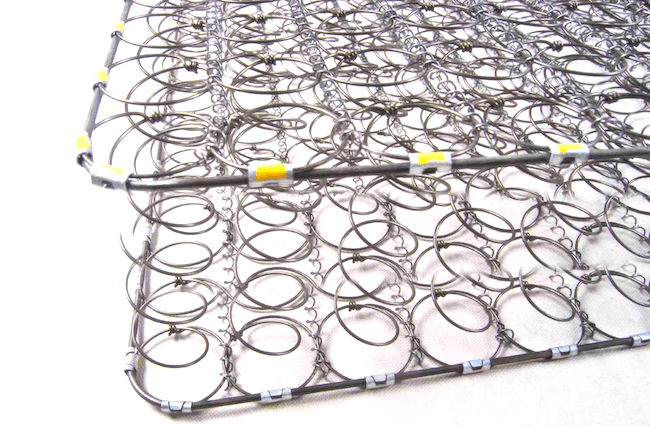The Beginners Guide to Mattresses
- Sherri Hiner
- Nov 14
- 4 min read
Mattresses can be deceivingly simple looking. After all, they're simply something to lay on while you sleep. Preferably comfortable, preferably soft, but most people don't put much more thought into it than that.
However, there's strong evidence to suggest that you should pay more attention to what you're lying on for nearly a third of your life!
After all, sleep is what restores and rejuvenates us! People who have poor sleep are at a far higher risk for many health complications, such as diabetes, heart disease, immunodeficiency, and mental health disorders! In general, not only does poor sleep lead to poor quality of life, but an increased risk of death!
So, it can be very important to understand what you're lying on, and the differences between them!
1. Memory Foam

To start with, let's show off the one everyone knows very well, memory foam. A term that everyone knows is a mattress! But what is memory foam?
Memory foam was first developed by NASA to provide cushioning against shakes and crashes. It's a type of foam called polyurethane, which compresses under pressure and heat, before returning to its original state once the outside forces stop exerting pressure.
Memory foam was very popular, as it reduced the feeling of movement between two partners, was extremely comfortable, and was available at a friendly price point!
However, as the years passed, it's become easier to see the many shortfalls of memory foam mattresses!
Heat retention, breaking down within 5 years, and the toxicity from the chemicals used to make it were all common complaints.
Memory foam makes use of many harsh chemicals in order to retain its springy nature, like formaldehyde, methylene chloride, and methylbenzene. These are all carcinogenic, which means they all have the potential to cause cancer.
Not to mention, the chemical flame retardant many memory foam mattresses use has been linked to infertility, cancer, obesity, and developmental brain disorders, and may even contribute to neurodevelopmental disorders.
This isn't the worst of though, as VOCs are what causes the smell of a new mattress. Those are chemicals that you're inhaling, which can cause eye, throat, and nose irritation, aggravate asthma and allergies and even cause certain types of cancer.
2. Coils

Coils are a classic in bedding! Innerspring mattresses are made up of hundreds of coils that support you. Different shapes of the coils offer different feels, depending on your needs.
Coils offer full-body support, easier movement than foam mattresses, and more airflow than foam mattresses. Thanks to its open structure, with plenty of air going between the coils, coils can be very useful for sleepers who sleep very hot and need something to keep them cool during the night.
However, coils can be too firm for many people, or, if you have a low quality of fabric over the coils, they can poke through and unwind, poking you and giving no support at all. Additionally, the problem with coils is they do not rise up to fill in the gaps between your body and the mattress like other materials might do. This can result in a variety of aches and pains.
3. Hybrid

Hybrid combines both the best of coils and foam.
With a comfort layer on the very top called a pillow top that feels, well, like a pillow, then a comfort layer made of foam, latex, or gel-infused foam, ensure that those two layers offer comfort and coolness.
Beneath those two layers, is a support layer. This is the largest layer, about 7 or so inches, made of coils. Finally, on the very bottom, this foam layer offers base support, sturdiness, and stability.
However, while it has the benefits of both types of mattresses, it also has the flaws and complications of each type!
Mainly, most people do just simply not enjoy how it feels. While it provides similar support, there's not the same soft pillow top feeling that many people associate with memory foam.
4. Latex

As people who sell and sleep on exclusively latex, we may have a bit of a bias towards latex. However, we sell and sleep on latex because we truly believe in latex mattresses and the benefits they bring to us.
Namely, the comfort latex brings. While it can depend a bit on the type of latex you buy, latex is extremely comfortable. It brings to mind a feeling of sinking slightly. Comparable to memory foam in that it isolates movement, but unlike memory foam, latex does not retain heat.

Latex is anti-microbial, anti-fungal, completely renewable, and biodegradable!
Not to mention, its lack of VOCs and harmful chemicals, or synthetic materials.
Ethically sourced wool, steel, cotton, and latex all allow you to feel good about your mattress! Superbly comfortable, and made in a way that supports local workers and the environment? Other types of mattresses simply cannot match up.
Of course, there are other types of mattresses, but these are the four most common types! While they all have pros and cons, there's bound to be a bed for you!
What do you sleep on?
Memory Foam
Coils
Hybrid
Latex (Any Sort!)
_edited.png)



Comments